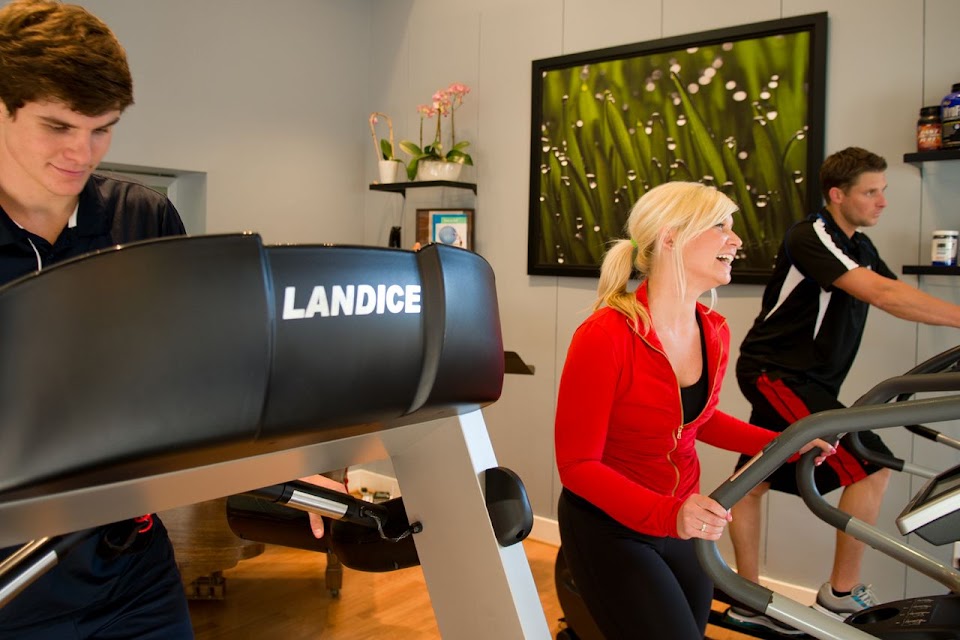Every year, millions of people begin the journey to lose weight and get fit. Many of these people make drastic changes and arrive at a point where they can call themselves fit.
Unfortunately, most people who start their weight loss journey struggle and never finish it. What is the difference between those who succeed and those who don’t? After working with many people on both sides of the spectrum, I’ve discovered that there are major differences between these two types of people, and it has nothing to do w
ith genetics.
Here is what I’ve learned that the successful people do differently to become fit when others fail. Adopt these principles, and you’ll see results in no time.
1-Find Solutions, Not Excuses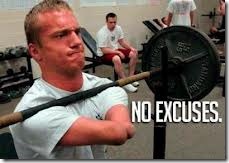
During your fitness journey, you will run into challenges. Those who don’t lose weight give up as soon as the going gets tough. Those who drop the fat will say to themselves, “This is hard, but how can I make it easier? How can I make myself stronger?”
2-Clean the Slate Often
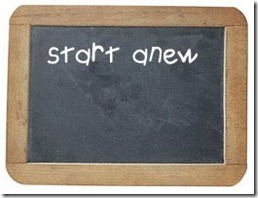
Temptations arise and mistakes happen, but veering off the path for a second doesn’t mean that you have failed and should give up. Just because you slipped and ate some donuts for breakfast doesn’t mean you should use that as an excuse to eat poorly the rest of the day. To succeed, recognize the mistake, say oops, wipe the slate clean, and get back on the path to fitness success without guilt.
3-Envision the End Result
When you reach fitness success, what does it look like? How does it feel? How have you changed? Those who succeed answer these questions at the beginning. They actively keep the end results in mind and use that as motivation to reach their goals.
4-Focused Workouts

To lose fat, you must come to each workout with a purpose. Have a plan, and work your butt off every time. Those who succeed mean business, and they don’t put up with people who want to chit-chat and distract them during this sacred time.
5-Track Progress
Weight is not the only indicator of success in fitness. Those who succeed keep track of measurements, body fat percentage, increases in strength, weight lifted during each workout, and any other metrics that are a part of your goals.
6-Plan and Prepare
What happens when lunchtime hits and you are out and about running errands? What do you do? Many people get so hungry that they make poor choices, or they grab fast food in a hurry. Successful fit people prepare their meals ahead of time and don’t have to worry about getting stuck without a healthy meal. They have prepared a gym bag to make it easy to get to the gym and avoid excuses. They schedule their day to reflect their priorities.
7-Make Goals Visible
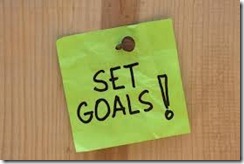
Setting goals is one thing. Having your goals at the front of your mind at all times is very different. Those who succeed have their goals written down and reminders posted where they frequently spend their time. The kitchen, bedroom, bathroom, office, and the car are the perfect places to stick a reminder. Maybe it’s a motivational message to keep your head in the game or a photo of someone you aspire to look like. These successful people review their goals often to make sure they are on track.
8-Surround With Supportive Friends
You become like those you spend your time with. People who succeed spend most of their time with others who positively influence them. These friends support eating and exercise habits that will help you succeed. Avoid people who don’t respect your lifestyle choices or encourage you to make poor choices. Even better, see if you can get any friends to join you for exercise or have a healthy meal together. You can help motivate each other.
9-Eat For Nourishment, Not Pleasure
Those who succeed in fitness see food as a way to nourish and fuel their bodies, not as a way to mindlessly snack or stuff down emotions. Most meals are prepared for this purpose. They allow themselves to indulge in their favorite treats every once in a while, but 90+% of the time, they eat healthy, whole foods for nourishment.
10-Schedule Reflects Priorities
When you schedule your day, what activities are most important to you? Those who succeed prioritize workouts and meals. They forgo or rearrange other activities to make sure they get their workout in and that they are able to nourish their bodies with whole foods. It’s easy to skip working out or eating a healthy meal when it isn’t scheduled as a regular part of your day. Planning and prioritizing make it harder to make excuses, and they help you develop successful habits and routines.
11-Supplement Diets Properly
The supplement world is absolutely crazy and overwhelming. There are thousands of worthless and possibly harmful products on the market, making it challenging to know what’s worth buying without the help of an expert. Those who succeed stick with the basics and don’t jump on every weight loss gimmick that Dr. Oz recommends. The most important supplements they use are
protein powders to help them consume enough protein, a
multivitamin to help them obtain the most important vitamins and minerals, a
greens supplement to help them get enough servings of fruits and veggies, and
fish oil. They may use other supplements, but these are the key ones they wisely use.
12-Test How Their Bodies Respond
Those who succeed can tell you how certain foods affect their bodies. They know how their bodies respond to gluten, dairy, eggs, and other common allergens. They experiment with elimination diets and test how they react to various foods that may be problematic. They also realize that there isn’t any miracle diet; they just have to find what works for them.
13-Test Limits
What are you capable of achieving? How much weight can you lift? How fast can you run? How far can you bike? Those who are successful are constantly working to lift heavier weights, to run faster, and to ride further. Never underestimate your strength, and never hesitate to test your limits. This attitude can also help push you past a plateau.
14-Find a Balance
Being fit isn’t about perfection–trying to be perfect all the time will make you crazy, and may even result in a binge. It’s about finding a balance that keeps you healthy while still allowing you to live a fulfilling life. Sometimes it’s great fun to take the kids out for pizza and ice cream. Don’t beat yourself up about it.
15-Comfortable Being Uncomfortable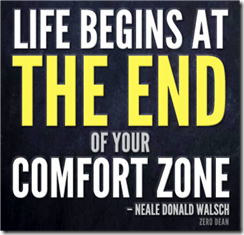
No matter what we do in life, we stop progressing as soon as we feel comfortable. Feeling uncomfortable is a sign of being stretched or challenged. Discomfort can come in the form of being sore after a hard workout or by being challenged by a new obstacle. Learn to appreciate this sensation rather than running from it.
16-Taking Care of Themselves
We all have identities we create for ourselves. We are so busy we don’t have time to workout. We take care of everyone else so we don’t have the energy to take care of ourselves. Those who succeed have the exact same identities, they just phrase them differently and in a more positive light. They are so busy, but it is a good thing they take time to exercise and eat right to support their busy schedules. They take care of everyone, so it’s even more important to take care of themselves so they can have the energy to do the caretaking.
17-Workouts as a Challenge, Not a Chore
I don’t hear many people, fit or not, who say they love how they feel during a workout. On the other hand, I hear countless people say they love how they feel when they finish their workout. They feel like they have overcome a challenge and accomplished something. Those who succeed see the workout as a challenge they need to overcome to reach their goal. They may be miserable while in the midst of a tough workout, but they know it will be worth it and that they will feel great afterward.
18-Work With a Coach
A coach or mentor keeps you accountable and guides you along the path that you need to follow. Those who succeed usually have a coach or mentor who helps them sift through all the misinformation and create a customized program for your unique body and goals. I have made it
extremely easy for you to get a coach. At this point, your only excuse is that you are making excuses.
19-Finds Healthy Ways to Deal With Stress
Everyone deals with stress–the difference is only how we deal with stress. These tactics can range from meditating or going for a walk, to eating junk food or drinking alcohol. Those who succeed find healthy ways to deal with stress rather than taking it out on their bodies.
20-Focus on Their Belief in Their Potential

Everyone has doubts and fears about their abilities to achieve any goal. On the other hand, everyone has a small measure of faith in themselves at some point. Those who succeed focus their attention on that faith rather than wallowing in doubt.
21-Ignore the Media and Fads
The media is full of useless, sensationalized information, especially when it comes to health and fitness. New fad diets pop up left and right, and there is always some celebrity ready to jump on board to endorse it. Eating healthy, whole foods and putting in hard work in the gym works consistently.
22-Rest
All weight loss and muscle growth happens when you are resting, not when you are working out. Excess exercise also leads to increases in cortisol, which is a stress hormone linked to belly fat. To succeed in your weight loss journey, make sure you get adequate rest.
23-Practice Simple Principles
Weight loss is simple. There really aren’t any fat loss secrets. I lay out what you need to do in my
5-day fat loss course.
24-Learns From Those Who Know
An easy way to find more information is to follow me. I share articles that remove the clutter and make understanding weight loss easy
